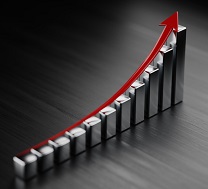Precious Metals News

Bloomberg News: China's PBOC Adds Gold for 14th Month As Prices Hit Record
Goldman Sachs Group estimated that China added 15 tons of gold to its reserves in September, compared with only around 1 ton of gold the country officially reported.

Benzinga: Silver Eyes $100: From 'Dead' Bitcoin Mania to the 'Reverse 1934' Squeeze
The supply shock collides with a structural deficit approaching 150 million ounces, driven by relentless industrial demand for solar and electrification.

Fox Business: Gold, Silver Shined in 2025, Can the Luster Hold in 2026?
"I think there is so much more to come because the rationale as to why I wanted people to go long hard assets over paper has barely started to fall into place."

BBC News: Why Has the Price of Silver Hit a Record High?
Experts predict that rising sales of EVs will further push up demand for silver, while advanced batteries for the cars will require even more of the metal. But it is difficult to quickly increase silver supplies.

Bloomberg News: China's PBOC Extends Gold-Buying Streak as Metal's Rally Cools
The PBOC, seeking greater financial clout and standing in the global bullion market, is also courting foreign central banks with offers to store their gold in China.

CNBC: Gold and Silver Reach Fresh Highs for Second Day Running - and Could Keep Climbing
"I think all metals, for the most part, are rising because they have been under-owned and there's a further risk that global debt around the world is just exploding."

Financial Times: Silver Surges Above $60 for First Time on Global Supply Squeeze
Price of metal has more than doubled this year amid booming demand from investors and industrial users

Forbes - Silver And Gold: Shining Metals
When confidence in governance declines, the opportunity cost of holding gold becomes irrelevant. Investors aren't chasing yield; they're chasing safety.

Investing.com: Gold and Silver Set to Print New All-Time Highs in the Months Ahead
Silver's outlook remains strong based on several fundamental factors. This year's rally reflects tightening physical inventories, sustained industrial demand, and the metal's designation as a US critical mineral.

Market Watch: Ed Yardeni Said Gold Would Top $4,000 by Year-end. He Was Right. Here's What He Foresees in 2026.
"We suspect that the precious metals prices might be signaling recent concerns about an excessively stimulative combination of monetary and fiscal policies in the U.S. next year."
-
Market Watch: The So-called Great Debasement Trade is Back on as Gold Sets Fresh Record, Says This Strategist
-
NBC News: Silver And Wow
-
Reuters: Silver Crosses $70 Milestone, Gold Extends Record Run
-
Visual Capitalist: Countries Stockpiling the Most Gold Reserves Since 2000
-
Bloomberg News: Why Silver Price Has Been Surging Even More Than Gold
-
Fox Business: 'Gold Rush' Star Warns Washington Has 'Zero Interest' in Fixing the Debt, Fueling a Massive Gold Boom
-
Yahoo Finance: Gold on Pace for Weekly Win as Momentum Drives Historic 2025 Rally
-
Barron's: Silver Is Soaring. Why the Rally Has Legs
-
Market Beat: Why Silver Beat Gold and the S&P in 202 - And What Comes Next
-
The Wall Street Journal: Silver Hits Record High on U.S. Rate-Cut Bets, Supply Tightness
-
Barron's: Central Banks Are Tilting Away From the Dollar. What They're Buying Instead.
-
Benzinga: China's Secret Gold Play Fuels Goldman's $4,900 Target
-
Bitcoin.com: Robert Kiyosaki Frames Silver's Possible $200 Level Within His 2026 Outlook
-
Bloomberg News: Gold Prices Seen Topping $5,000 by End of 2026, JPM Private Says
-
Forbes: China Chases Gold Supremacy as it Builds a U.S. Dollar Alternative
-
Market Watch: America's 'Sugar Daddy' Just Went Broke - And You're Stuck With the Bill
-
Bloomberg News: Copper and Silver Join Revamped US List of Critical Minerals
-
Eurasia Review: Gold's Flashing Warning - The End is Nigh for Fiat
-
Forbes: Choose Your Gleam: Gold Or Silver?
-
Investing Live: China's Hidden Gold Buying May Be 10x Official Data as De-dollarization Accelerates
-
Barron's: Gold's Rally Reflects the U.S. Deficit. Neither Is Ending Soon
-
Bloomberg News: Gold Hits Fresh Record on Fed Rate-Cut Hopes as Silver Surges
-
Business Insider: Why Investors Are Flocking to Silver and Platinum, Not Just Gold
-
Fortune: At This Rate, the Price of Gold Could Soar to $10,000 Per Ounce in Just Three Years
-
Fox Business: National Debt Surpasses $38 Trillion Milestone for First Time in US History as Spending Surges
-
Investing Live: In This Market, Just "Buy Shiny Stuff": SocGen
-
Investing.com: BofA Says Gold Rally Not Extreme, Next Target $5,000 by 2026
-
Market Place: A Shortage of Silver Has Prices for the Precious Metal Surging
-
Market Watch: Bank of America Now Sees $65 Silver, as Price Spike Reduces London Market to a 'State of Seizure.'
-
The Wall Street Journal: Gold Demand Climbs as Investors Seek Safe Havens, WGC Says
-
CNBC: Ray Dalio Says Today is Like the Early 1970s And Investors Should Hold More Gold Than Usual
-
Finbold: 'Rich Dad' R. Kiyosaki Reveals Where to Invest $100 Right Now
-
Forbes: Silver To Skyrocket: Retail Investors Drive Precious Metals to New Heights
-
Fortune: Gold's Price Record is Driven by the 'Debasement Trade,' China, And Fear of An AI Bubble, Analysts Say
-
Investing.com: Gold Eyes $4,000 Record, Silver Surges Towards $50 Milestone. Silver is making an equally impressive push toward $50/oz.
-
Investopedia: Gold Is Pricier Than Ever. Here's Why Experts See It Rising Even Higher
-
Market Watch: Billionaire Ken Griffin Warns on Consequences of Gold's Rally as Goldman Targets Nearly $5,000
-
Market Watch: When the World's Largest Asset Manager And the 'Bond King' Both Agree - Run to Gold, Silver and Bitcoin
-
Market Watch: Why This Veteran Investor Sees Gold Hitting $7,000 By the End of Trump's Term
-
Silver Academy: Francis Hunt Calls For $330 Silver
-
The Wall Street Journal: Silver Hits Historic $50 Mark as Investors Rush to Safety

